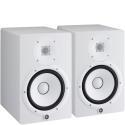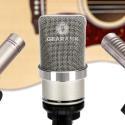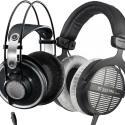Everything You Need to Know About Audio Frequency Response
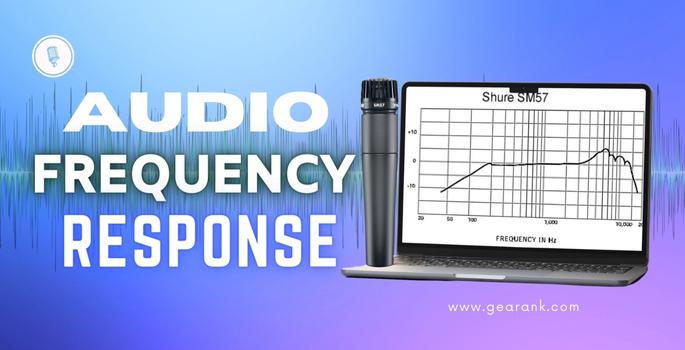
Frequency Response:It is a numerical or visual representation of how an audio device reproduces the different frequencies of an input audio. |
If you have been learning audio production or music in general for some time, you may have come across the term "frequency response."
It is a term commonly used, especially when discussing studio monitors, headphones, and microphones. You may hear phrases like "the device should have a flat response" or "some devices will add coloration to the audio signal."
But what does frequency response mean? Why is it important to understand it, and how can it impact the quality of music we produce?
In this article, I will go into detail about what frequency response is and its musical implications.
You will discover that frequency response is primarily present in audio equipment. Understanding it will help you make more informed decisions when choosing your audio devices.
What is Audio Frequency Response?
Frequency response describes how an audio device responds to an audio signal. Depending on the type of device, an audio signal can be attenuated or boosted. And understanding frequency response lets you choose which audio device to use depending on your requirements.
Some devices, like studio monitors, are prevalent for their flat-frequency response. This means that when an audio signal passes through these devices, it presents them as neutral as possible. This is good frequency response for use when mixing and mastering.
On the contrary, devices like microphones can boost or attenuate some frequencies. For example, a Shure SM57 will favor mid-to-high frequencies more. This means it doesn't produce a flat audio signal. These mics are designed to enhance the input signal to favor certain sound sources.
The range of audible frequencies our ears can hear is called the audio frequency spectrum. It covers frequency ranges from 20 Hz up to 20 kHz, comprising the three most common frequencies: low, mid, and high.
Phase response is a related metric that is also important in getting good quality audio.
Frequency Response Curve
The frequency response curve is best illustrated using this parametric EQ. On the X-axis is the frequency range, from lowest (left) to highest (right). Meanwhile, the level, or amplitude, is on the Y-axis, with the lowest at the bottom and the highest at the top.

This straight line indicates the frequency response curve of a device. In this particular graph, you see a flat line. This flat response indicates that the audio device will not affect the signal that passes through it. This flat response is what audio engineers seek in studio monitor speakers. This is because it produces a faithful reproduction of the recorded audio.
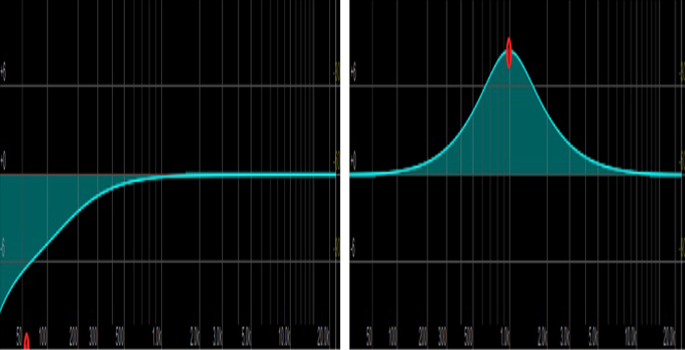
On the left, you see a dip in frequency response in the bass range. This means this audio device attenuates the bass frequencies passing through it.
On the right side, you see a boost in the mid-frequency range. Here, the signal's mid-frequency is boosted by the device.
How to Know The Frequency Response of an Audio Equipment?
-
Frequency Response Graphs
A frequency response chart or graph will look like an equalizer as shown earlier (For more info about equalizers, check out: What is EQ in music). It represents the frequency response curves, or changes, on a flat signal as it goes from the input to the output.
This is important for knowing the frequency response of a device. It's because it shows the frequency range relative to the level or amplitude of the frequency within that range.
The frequency response graph is the most efficient way of looking at a device's frequency response. However, manufacturers will not include a frequency graph in their product specs.
-
Frequency Response Range
Instead, most will show the frequency response range, which looks like "20 Hz–20 kHz". This is useful as it tells you that the device can let frequencies between 20 Hz and 20 kHz pass.
But this information is still vague. There can be extreme peaks and dips that might exist within the said range. A more useful piece of information should include tolerance.
-
Frequency Response Tolerance
The frequency response tolerance shows you the change in level within a frequency range. Let's say a microphone has a spec that looks like this: "20 Hz–20 kHz (-3 dB)."
It tells you that your microphone can let a 20 Hz to 20 kHz frequency range pass through. In addition, it also states a maximum frequency deviation of -3 dB. This means that better-sounding speakers will have an amplitude response not exceeding more than -3 dB.
Frequency response curves that are within the +/- 3 dB tolerance are considered to be accurate. We must assume a +/- 3 dB tolerance if it's not indicated on the product.
However, some manufacturers intentionally exclude this detail to make their products more appealing. Check the documentation that comes with the product, read online reviews, or observe a test signal.
-
Sending a Test Signal
If your device doesn't provide any information about its frequency response, you can conduct your own test to measure its output. This will help you understand the device's transfer function or its effect on the signal.
To do this, you can use software like Q-Sys, which is used for custom programming and audio-digital signal processing.
To conduct the test, set up a test signal of pink noise and send it in two directions. One copy goes straight to the Responsalyzer as a reference. The other copy goes through the device being tested before going into the Responsalyzer.
The Responsalyzer will then show you a graph similar to a parametric EQ. This graph will show how the device being tested affects the audio signal as it passes through it.
Why is Frequency Response Important in Music?
Knowing the frequency response will help you understand how it affects the audio signals passing through it. It's crucial in professional as well as consumer audio circles.
This knowledge will help you make informed decisions. It can be choosing the right microphone to capture the low end of your drums or highlight the mid-high frequencies of your guitars.
Knowing which audio frequencies to cut or boost is important when mixing audio, as you process an instrument or a human voice. Having a speaker monitor with a flat frequency response is also crucial to get the sound as clear and flat as possible for the human ear . This ensures that you're hearing audio without any added enhancements or effects. This will allow you to pinpoint any flaws in the recording.
What Factors Influence Audio Frequency Response?
In an acoustic setting, several factors can influence the frequency response of a device.
Microphones or Speakers Directionality:
The frequency response specifications of these devices are rated based on their on-axis response. This implies that the frequency response will differ based on the direction in which a microphone or speaker is aimed.
When a microphone absorbs off-axis sound waves, it will sound darker. Similarly, speakers will sound darker if they are not aimed directly at the listener.
Proximity Effect:
When using a directional microphone, such as a cardioid mic, you will experience a boost in the low frequencies as you get closer to the source. This will impact the expected frequency response of the microphone.
Devices in the Signal Chain: Each part of your signal chain will have its own frequency response. Plugins, hardware, and even cables can affect the frequency response of your signal. Therefore, conducting tests by isolating each device you're testing is critical.
Final Thoughts
Understanding the frequency response of an audio device is crucial to determining how it behaves. Some devices have a flat response, meaning they pass the signal without altering it. On the other hand, others are designed to emphasize specific frequencies.
An audio device with the appropriate frequency response is essential to ensuring sound accuracy. For example, generally speaking, a kick drum should emphasize a boomy low-frequency sound. A guitar, however, should focus on the mid-high frequencies for a crisp or punchy sound.
From a mixing perspective, a speaker monitor with a flat frequency response is the best option. This is because it faithfully reproduces the audio signal without enhancing its frequencies. But if you're looking for the best listening experience, you can opt for audiophile speakers.
All in all, the frequency response is a guide that determines how audio devices process signals. Use it to make more informed audio production decisions, like when choosing between using a high pass vs low pass filter.
Frequently Asked Questions
What is a Flat Frequency Response?
A device with a perfectly flat frequency response can transmit an audio signal without adding any coloration. This is crucial when selecting a monitor speaker for audio production. You want a monitor that provides an accurate representation of the audio that is played through it.
In a musical context, when a note is played, it produces a fundamental frequency. The resulting musical tones should stay the same as it passes through a device with a flat frequency response. There should be no enhancement or alteration of the audio signal.
What is a Colored Frequency Response?
In contrast to a flat response, a device that is colored has a nonlinear frequency response. It will emphasize some frequencies while suppressing others.
This type of response is common on specialized microphones. These mics are designed to capture the unique sound qualities of voices, musical instruments, speakers, and other sounds.
For instance, the Shure Beta 52A is ideal for recording a kick drum sound. The Shure SM57, however, is more commonly used to capture the sound of a guitar amplifier.
What Are Frequency Response Specifications?
This specification refers to the frequency response measurements. The frequency response spec indicates how an audio system or device responds to different frequencies within the audible range.
Contributors:
- Raphael Pulgar - Editor
- Jerry Borillo - Illustrator




